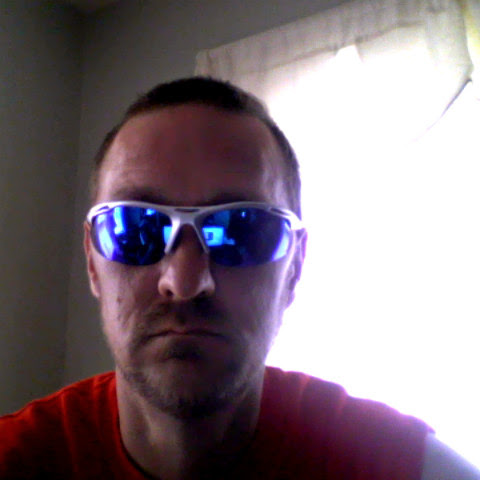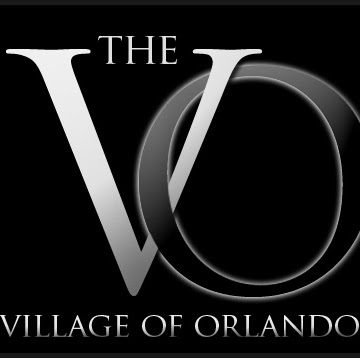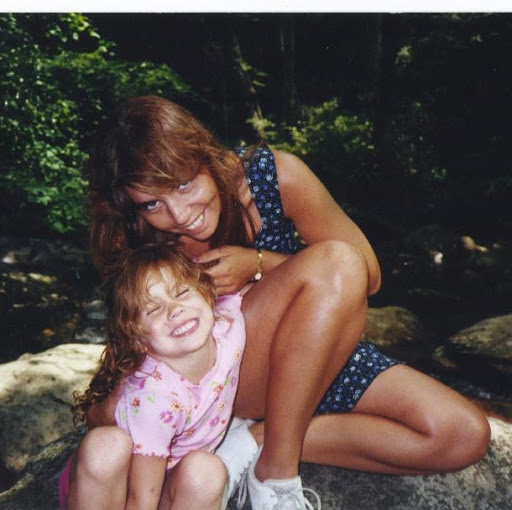Charles J Rowe
age ~70
from Winthrop, MA
- Also known as:
-
- Charles J Roe
- Phone and address:
-
30 Coral Ave, Winthrop Hlds, MA 02152
(857)8917214
Charles Rowe Phones & Addresses
- 30 Coral Ave, Winthrop, MA 02152 • (857)8917214
- Lewiston, ME
- Salem, MA
- 30 Coral Ave, Winthrop, MA 02152
Work
-
Position:Service Occupations
Education
-
Degree:Graduate or professional degree
Isbn (Books And Publications)


Lawyers & Attorneys
License Records
Charles R. Rowe
License #:
MA.001489 - Active
Issued Date:
Aug 5, 2011
Expiration Date:
Jun 17, 2017
Type:
Medication Administration (V)
Charles R. Rowe
License #:
PST.010681 - Active
Issued Date:
Jun 26, 1975
Expiration Date:
Dec 31, 2017
Type:
Pharmacist
Charles R Rowe
License #:
9373 - Active
Category:
Electricians
Issued Date:
Feb 16, 1993
Expiration Date:
Jul 31, 2019
Type:
Electrician Master
Name / Title
Company / Classification
Phones & Addresses
Owner
Rcc Electric
Electrical Contractor
Electrical Contractor
232 Alpine St, South Paris, ME 04281
(207)7438869
(207)7438869
HOSS CAT, INC
Us Patents
-
System For Manufacturing Controlled Release Dosage Forms, Such As A Zero-Order Release Profile Dosage Form Manufactured By Three-Dimensional Printing
view source -
US Patent:7300668, Nov 27, 2007
-
Filed:Oct 29, 2002
-
Appl. No.:10/284039
-
Inventors:Wendy E. Pryce Lewis - Watertown MA, US
Charles William Rowe - Medford MA, US
Michael J. Cima - Winchester MA, US
Peter A. Materna - Metuchen NJ, US -
Assignee:Massachusetts Institute of Technology - Cambridge MA
-
International Classification:A61K 9/20
A61K 9/22
A61K 9/24 -
US Classification:424472, 424464, 424468, 424471, 424473
-
Abstract:The present invention includes controlled release dosage forms and methods of designing and manufacturing dosage forms to obtain specific release profiles, for example, zero-order release profiles, escalating release profiles or decreasing release profiles. The dosage forms of the present invention can include spatial variation of API concentration in the dosage form and can include nested regions. Dosage forms according to the present invention may be manufactured by any appropriate method for obtaining the internal structure as disclosed herein for producing zero-order release profiles and increasing or decreasing release profiles. The invention further includes methods of manufacturing such dosage forms, such as by three-dimensional printing, possibly also including compression of the dosage form after three-dimensional printing. The invention further includes methods of designing such dosage forms. Release profiles from non-uniform distributions of API concentration may be predicted based on simple experiments with uniform-concentration dosage forms.
-
Compositions Of N-[2,4-Bis(1,1-Dimethylethyl)-5-Hydroxyphenyl]-1,4-Dihydro-4-Oxoquinoline-3-Carboxamide
view source -
US Patent:7553855, Jun 30, 2009
-
Filed:May 14, 2007
-
Appl. No.:11/748073
-
Inventors:Christopher R. Young - Waltham MA, US
Charles William Rowe - Medford MA, US -
Assignee:Vertex Pharmaceuticals Incorporated - Cambridge MA
-
International Classification:A61K 31/47
-
US Classification:514312
-
Abstract:Pharmaceutical compositions including N-[2,4-bis(1,1-dimethylethyl)-5-hydroxyphenyl]-1,4-dihydro-4-oxoquinoline-3-carboxamide (Compound 1) and methods of using such compositions are described herein.
-
System For Manufacturing Controlled Release Dosage Forms, Such As Zero-Order Release Profile Dosage Form Manufactured By Three-Dimensional Printing
view source -
US Patent:7820201, Oct 26, 2010
-
Filed:Oct 22, 2007
-
Appl. No.:11/876153
-
Inventors:Wendy E. Pryce Lewis - Lexington MA, US
Charles W. Rowe - Medford MA, US
Michael J. Cima - Winchester MA, US
Peter A. Materna - Metuchen NJ, US -
Assignee:Massachusetts Institute of Technology - Cambridge MA
-
International Classification:A61K 9/24
A61K 9/20
A61K 9/22
A61K 9/48 -
US Classification:424472, 424451, 424453, 424468, 424473
-
Abstract:The present invention includes controlled release dosage forms and methods of designing and manufacturing dosage forms to obtain specific release profiles, for example, zero-order release profiles, escalating release profiles or decreasing release profiles. The dosage forms of the present invention can include spatial variation of API concentration in the dosage form and can include nested regions. Dosage forms according to the present invention may be manufactured by any appropriate method for obtaining the internal structure as disclosed herein for producing zero-order release profiles and increasing or decreasing release profiles. The invention further includes methods of manufacturing such dosage forms, such as by three-dimensional printing, possibly also including compression of the dosage form after three-dimensional printing. The invention further includes methods of designing such dosage forms. Release profiles from non-uniform distributions of API concentration may be predicted based on simple experiments with uniform-concentration dosage forms.
-
System And Method For Uniaxial Compression Of An Article, Such As A Three-Dimensionally Printed Dosage Form
view source -
US Patent:7931914, Apr 26, 2011
-
Filed:Oct 29, 2002
-
Appl. No.:10/284430
-
Inventors:Wendy E. Pryce Lewis - Watertown MA, US
Charles William Rowe - Medford MA, US
Michael J. Cima - Winchester MA, US
Peter A. Materna - Metuchen NJ, US -
Assignee:Massachusetts Institute of Technology - Cambridge MA
-
International Classification:A61K 9/20
A61K 9/28
A61K 9/14
A61K 9/16
A61K 9/48
A61F 13/00 -
US Classification:424464, 424451, 424452, 424463, 424465, 424474, 424489, 424490, 424422
-
Abstract:A uniaxially compressed dosage form manufactured by three-dimensional printing that preserves the predetermined internal architecture of the dosage form while producing an improved surface finish. The compression compacts the dosage form, eliminating at least some of the void space that remains at the end of conventional three-dimensional printing. Surface finish obtained as a result of the uniaxial compression process can be essentially equal to that obtained from conventional tablet pressing. Additionally, the internal structure or spatial variation of composition of the dosage form is preserved during the pressing operation, with geometric shrinkage occurring mostly in the direction of the axis of pressing. Further, as a result of compression, a greater quantity of API can be packed into a given final volume of dosage form.
-
Compositions Of N-[2,4-Bis(1,1-Dimethylethyl)-5-Hydroxyphenyl]-1,4-Dihydro-4-Oxoquinoline-3-Carboxamide
view source -
US Patent:8076357, Dec 13, 2011
-
Filed:May 26, 2009
-
Appl. No.:12/471950
-
Inventors:Christopher R. Young - Waltham MA, US
Charles William Rowe - Medford MA, US -
Assignee:Vertex Pharmaceuticals Incorporated - Cambridge MA
-
International Classification:A61K 31/47
-
US Classification:514312
-
Abstract:Pharmaceutical compositions including N-[2,4-bis(1,1-dimethylethyl)-5-hydroxyphenyl]-1,4-dihydro-4-oxoquinoline-3-carboxamide (Compound 1) and methods of using such compositions are described herein.
-
Method And Materials For Controlling Migration Of Binder Liquid In A Powder
view source -
US Patent:20020106412, Aug 8, 2002
-
Filed:Jul 10, 2001
-
Appl. No.:09/904190
-
Inventors:Charles Rowe - Medford MA, US
Michael Cima - Winchester MA, US
Wendy Pryce Lewis - Watertown MA, US -
Assignee:Therics, Inc - Princeton NJ
-
International Classification:A61K009/16
A61K009/50 -
US Classification:424/490000, 264/004000
-
Abstract:A method and apparatus for controlling the migration of binder liquid in a bulk powder. The bulk powder may be deposited in a powder bed and contains at least two different substances, each in powder form. One substance gives the printed part its bulk properties, forms most of the powder, and preferably is either insoluble or not significantly soluble in the binder liquid. The other powder substance is a migration control substance. Upon interaction with the binder liquid, this substance may absorb the binder liquid and form a gel or dissolve into the binder liquid increasing viscosity thereby inhibiting binder migration. No chemical reactions occur between the binder liquid and any of the substances in the powder bed. In another embodiment of the instant invention, binder migration may be further controlled by first printing a barrier region in the powder bed containing the migration control substance. The instant invention provides functional and aesthetic advantages including more accurate release profiles in oral dosage forms and more dimensionally controlled edges and surfaces of parts. The result is sharper, more dimensionally controlled edges and surfaces of parts and sharper meetings of dissimilar binders in cases where more than one binder liquid is involved. The method is useful for printing pharmaceutical Oral Dosage Forms, attaining better control of the time release characteristics.
-
Printing Or Dispensing A Suspension Such As Three-Dimensional Printing Of Dosage Forms
view source -
US Patent:20030099708, May 29, 2003
-
Filed:Nov 21, 2001
-
Appl. No.:09/991556
-
Inventors:Charles Rowe - Medford MA, US
Wendy Pryce Lewis - Watertown MA, US
Michael Cima - Winchester MA, US
Esteban Bornancini - North Wales PA, US
Jill Sherwood - Edison NJ, US
Christopher Gaylo - Princeton Junction NJ, US
James Fairweather - West Haven CT, US -
Assignee:Therics, Inc - Princeton NJ
-
International Classification:A61K009/26
A61K009/16
A61K009/50 -
US Classification:424/469000
-
Abstract:The invention includes dispensing a suspension containing solid particles for use in manufacturing a dosage form or other biomedical article by 3DP. The suspension contains solid particles suspended in a liquid. The solid particles may be one or more Active Pharmaceutical Ingredients. The solid particles may be particles of material that are insoluble in the liquid, or they may be particles of a substance that have already dissolved in the liquid up to the saturation level and are present in a concentration beyond what can be dissolved. In addition to solid particles, the liquid may also contain other substances dissolved in it, either substances containing Active Pharmaceutical Ingredients (API) or substances without API. One aspect of the invention includes prevention of agglomeration by adding one or more of several categories of additives to the suspending liquid. Another aspect of the invention includes manipulating the surface charge of the particles in an API suspension to prevent particles from agglomerating. A further aspect of the invention includes an amorphous API that has a greater bioavailability than the corresponding crystalline material. Yet another aspect of the present invention includes a system for providing continuous circulation of the suspension such that the solid particles remain dispersed in the suspension.
-
Method And Materials For Controlling Migration Of Binder Liquid In A Powder
view source -
US Patent:20040062814, Apr 1, 2004
-
Filed:Oct 14, 2003
-
Appl. No.:10/685021
-
Inventors:Charles Rowe - Medford MA, US
Michael Cima - Winchester MA, US
Wendy Pryce Lewis - Watertown MA, US
Donald Monkhouse - Radnor PA, US
Sandeep Kumar - Thousand Oaks CA, US
Jaedeok Yoo - East Windsor NJ, US -
International Classification:A61K009/14
-
US Classification:424/489000
-
Abstract:A method and apparatus for controlling the migration of binder liquid in a bulk powder. The bulk powder may be deposited in a powder bed and contains at least two different substances, each in powder form. One substance gives the printed part its bulk properties, forms most of the powder, and preferably is either insoluble or not significantly soluble in the binder liquid. The other powder substance is a migration control substance. Upon interaction with the binder liquid, this substance may absorb the binder liquid and form a gel or dissolve into the binder liquid increasing viscosity thereby inhibiting binder migration. No chemical reactions occur between the binder liquid and any of the substances in the powder bed. In another embodiment of the instant invention, binder migration may be further controlled by first printing a barrier region in the powder bed containing the migration control substance. The instant invention provides functional and aesthetic advantages including more accurate release profiles in oral dosage forms and more dimensionally controlled edges and surfaces of parts. The result is sharper, more dimensionally controlled edges and surfaces of parts and sharper meetings of dissimilar binders in cases where more than one binder liquid is involved. The method is useful for printing pharmaceutical Oral Dosage Forms, attaining better control of the time release characteristics.
Resumes

Charles Rowe
view source
Charles Photo Rowe
view source
Charles Rowe
view source
Charles Rowe
view source
Charles Rowe
view source
Charles Rowe
view source
Charles Rowe
view sourceSkills:
Microsoft Office

Charles Rowe
view sourceMedicine Doctors

Charles T. Rowe
view sourceSpecialties:
Diagnostic Radiology
Work:
Asheville Radiology AssocsAsheville Radiology Associates
534 Biltmore Ave, Asheville, NC 28801
(828)2130800 (phone), (828)2139321 (fax)
534 Biltmore Ave, Asheville, NC 28801
(828)2130800 (phone), (828)2139321 (fax)
Education:
Medical School
University of Virginia School of Medicine
Graduated: 1968
University of Virginia School of Medicine
Graduated: 1968
Languages:
English
Description:
Dr. Rowe graduated from the University of Virginia School of Medicine in 1968. He works in Asheville, NC and specializes in Diagnostic Radiology. Dr. Rowe is affiliated with McDowell Hospital and Mission Hospital.
Googleplus

Charles Rowe
Work:
Housingvisions - Assistant supervisor (2010)

Charles Rowe

Charles Rowe

Charles Rowe

Charles Rowe

Charles Rowe

Charles Rowe

Charles Rowe
Youtube
Myspace
News

Staten Island Ferry riders spot whale near Statue of Liberty
view source- "We got our first report about a quarter after 8 and we had several other sightings since then," said Charles Rowe, spokesman for the Coast Guard in New York City. "We issued an advisory to mariners to beware, exercise caution and leave the animal alone."
- Date: Nov 17, 2016
- Category: World
- Source: Google

Taxpayers Cover Coast Guard Private-Party Patrols
view source- "We're not protecting the wedding. We're protecting the people from the wedding," said Charles Rowe, a Coast Guard spokesman in New York. "The American people have the inherent right to use federal waterways with certain restrictions."
- Date: Sep 09, 2014
- Category: U.S.
- Source: Google

Bride-to-be, best man both drowned in NY accident
view source- The barge was one of three in the area, all properly moored and lighted, said Coast Guard spokesman Charles Rowe. The barge's illumination is part of the investigation, Rockland County Sheriff Louis Falco said Sunday.
- Date: Jul 29, 2013
- Source: Google

Autopsies: Victims from Hudson River boat crash drowned
view source- In a separate review, the U.S. Coast Guard has determined the barges were properly lit and complied with the law, agency spokesman Charles Rowe said Monday. The barge, operated by Tappan Zee Constructors, is being used to stage equipment for the $3.9 billion Tappan Zee Bridge replacement.
- Date: Jul 29, 2013
- Category: U.S.
- Source: Google

Oil Trades Near Two-Week High as President Obama Wins Election
view source- Five of the 21 ships are carrying gasoline, five aretransporting naphtha, four hold crude and three are fuel oil,Charles Rowe, a spokesman for U.S. Coast Guard in Staten Island,New York, said in a telephone interview yesterday. Phillips 66 (PSX)said it plans to resume operations at the Bayway re
- Date: Nov 07, 2012
- Category: Business
- Source: Google

Oil Trades Near Two-Day High Before Election; Shipments Resume
view source- Futures were little changed after rising from an almostfour-month low yesterday. Fifteen tankers, including two crudecarriers, will arrive over the next four days in New YorkHarbor, Charles Rowe, a spokesman for U.S. Coast Guard said in atelephone interview. Phillips 66 finished post-storm asses
- Date: Nov 05, 2012
- Category: Business
- Source: Google

Pakistan cargo ship searched for possible stowaway
view source- The vessel, named Ville D' Aquarius, was boarded by Coast Guard officers at 3 a.m. for a routine inspection when officers heard noises "consistent with the possible presence of stowaways" coming from one of the containers in the ship's hull, said Charles Rowe, a Coast Guard spokesman.
- Date: Jun 28, 2012
- Category: U.S.
- Source: Google

Feds: NJ Ship Search Turns up No Stowaways
view source- A Coast Guard team had boarded the ship outside New York Harbor early Wednesday as the ship prepared to dock, spokesman Charles Rowe said. The officers were knocking on a bulkhead, or partition, of the ship as a routine security check and heard knocks back, he said, but they couldn't pinpoint the so
- Date: Jun 28, 2012
- Source: Google
Plaxo

charles rowe
view sourcetech at Bell Canada

Charles Rowe
view source
Charles Alan Rowe
view source
Charles Keith Rowe
view source
Charles Angie Rowe
view source
Kenneth Charles Rowe
view source
John Charles Rowe
view source
Sam Charles Rowe
view source
Matthew Charles Rowe
view sourceClassmates

Charles Rowe
view sourceSchools:
Tenaha High School Tenaha TX 1956-1960
Community:
Tamathia Wilkerson, Colette Nesbett, Rowland Lollar

Charles Rowe
view sourceSchools:
Boonton High School Boonton NJ 1991-1995
Community:
Nick Destefano

Charles Rowe
view sourceSchools:
Edisto High School Cordova SC 2003-2007
Community:
Bill Clements, Thero Jennings

Charles Rowe
view sourceSchools:
Caroline High School Denton MD 1973-1977
Community:
Linda Woodward, Frank Martin, Tricia Arrington

Charles Rowe
view sourceSchools:
Jordan Vocational High School Columbus GA 1960-1964
Community:
David Cotton, Peggy Detwiler, Janet Hodges, Wanda Ashmore

Charles Rowe
view sourceSchools:
Mckinley High School Winchester IN 1953-1957

Charles Rowe
view sourceSchools:
Blairstown High School Blairstown NJ 1950-1954
Community:
Andrew Foley, Stephen Nehez, Roxane Cooper, Peter Barrett

Charles Rowe
view sourceSchools:
St. Catharine's Grammar School Glen Rock NJ 1957-1961
Get Report for Charles J Rowe from Winthrop, MA, age ~70













